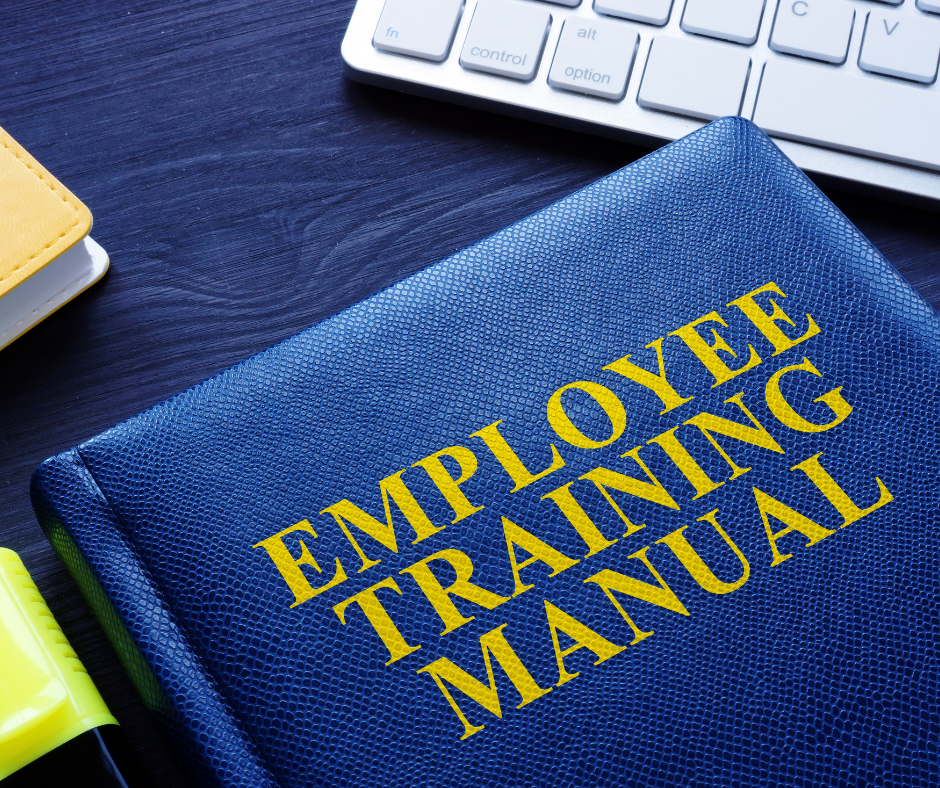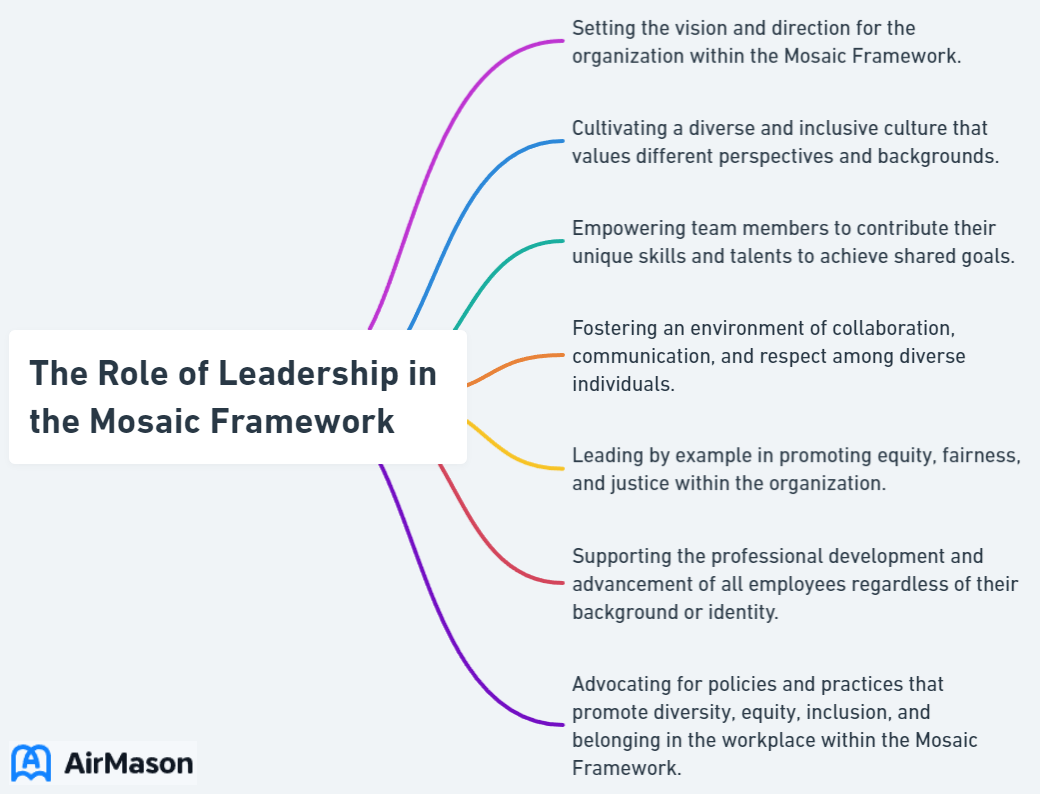
In the realm of Human Resources, a vibrant workplace is not a mere luxury; it’s an absolute necessity. The Mosaic HR framework is an innovative approach that encapsulates this essential, offering a comprehensive blueprint for creating a dynamic, inclusive, and efficient workplace. Strap in and prepare for a deep dive into the intricacies of crafting a stellar employee handbook, from defining a unique company culture to outlining clear policies and robust benefit programs, using a mosaic employee handbook example as a guide.
Key Takeaways
- The Employee Handbook serves as a comprehensive guide for creating a vibrant workplace, defining company culture, establishing clear policies, and outlining employee benefits to enhance engagement and productivity.
- Leadership within the Mosaic framework is integral, with leaders expected to exemplify company values, manage responsibilities effectively, and provide development opportunities to build a strong succession pipeline.
- The Mosaic Handbook emphasizes work-life harmony, the importance of technology and tools for collaboration and efficiency, and the creation of an inclusive community to foster a diverse, equitable, and supportive work environment.
Crafting the Mosaic Employee Handbook: A Blueprint for Success
The heart of any thriving organization beats in its employee handbook. In the context of the Mosaic framework, this crucial document serves as a blueprint for success. It is the compass that guides the employees through the labyrinth of company culture, policies, and benefits.
We will explore these aspects further and how they intertwine to form the mosaic of a vibrant workplace.
Fortune 500 Companies Employee Handbook
Welcome to the Fortune 500 Companies Employee Handbook, a comprehensive guide designed to navigate you through the policies and practices that govern your experience within our esteemed organization. In this handbook, you will find essential information about our company’s values, code of conduct, and expectations. As a member of our team, adherence to the guidelines outlined in the Fortune 500 Companies Employee Handbook is crucial to fostering a positive work environment and ensuring mutual success. Take the time to familiarize yourself with the contents of this handbook, as it serves as a valuable resource to support your professional journey within our dynamic and thriving organization.
Defining Your Company Culture
Just as an artist uses a unique blend of colors to breathe life into a painting, a company’s culture is defined by a combination of elements that make it distinct. The company culture is the DNA of an organization, a genetic code that shapes its identity and sets it apart. From defining the company’s purpose and values to crafting a vision and mission statement, every step taken towards establishing a company culture is a stride towards a more engaged and satisfied workforce.

Establishing Clear Policies
In the vast canvas of an organization, clear policies act as the guiding lines that shape the bigger picture. They foster transparency and efficiency, ensuring that employees are well-versed with their roles, responsibilities, and the company’s expectations. A well-defined policy framework not only streamlines organizational processes but also paves the way for a harmonious work environment.
Remember, as the workplace evolves, so should the policies. Regular reviews and updates, at least once a year, ensure that these guidelines remain relevant and effective.
Outlining Employee Benefits and Programs
Imagine a workplace where employees feel valued, motivated, and cared for – a place where benefits and programs serve not just as mere perks, but as pillars of a positive work environment. From health insurance and wellness programs to company-issued equipment, these elements play a pivotal role in cultivating a vibrant workplace.
By fostering work-life balance, providing positive reinforcement, attracting top talent, and enhancing productivity, these benefits and programs significantly contribute to a positive work environment.
The Role of Leadership in the Mosaic Framework

In the grand scheme of the Mosaic framework, leadership is the keystone that holds the structure together. Leaders are the torchbearers who light the path and guide the team towards the shared vision. They exemplify the desired behaviors and values, thereby aiding in bringing the Mosaic framework to life.
We will traverse the corridors of leadership, taking a look at aspects like leading by example, management responsibilities, and leadership development opportunities.
Leading by Example
Leadership is not about being in charge; it’s about taking care of those in your charge. When leaders lead by example, they:
- Become the mirror reflecting the company’s values and culture
- Fulfill promises
- Model expected behavior
- Establish a standard of excellence that inspires others to emulate.
The power of leading by example is far-reaching, resonating through every nook and cranny of the organization, fostering trust, collaboration, and a culture that everyone is proud to be a part of.
Management Responsibilities
The role of managers in the Mosaic framework is akin to the role of a sculptor, who shapes the raw material into a masterpiece. Their responsibilities encompass supporting the planning cycles, analyzing data to comprehend performance, and unveiling crucial insights that fuel the company’s growth.
Moreover, managers play a pivotal role in fostering a cultural mosaic within the company by:
- Encouraging diverse approaches
- Creating healthy teams
- Developing and implementing policies
- Ensuring compliance with policies
Managers serve as the guardians of the Mosaic framework.
Leadership Development Opportunities
The Mosaic framework recognizes leadership not as a destination but as a journey of continuous growth and learning. It provides a fertile ground for leadership development, offering individual and self-paced courses that emphasize behavioral attributes for executive success.
These opportunities not only facilitate the development of future leaders but also enhance employee engagement and retention, thus building a robust leadership pipeline that ensures the organization’s sustainable growth.
Position Management and Growth Paths
In an organization, every position is a piece of the larger mosaic. Position management is the art of defining these pieces, ensuring they fit perfectly to create a harmonious whole. The Mosaic framework enhances this process by providing essential tools for position definition and management of hiring rules.
Now, we will examine the pathways that lead to growth and development within these positions.
Charting Career Pathways
A clearly charted career pathway is like a roadmap that guides employees towards their professional goals. It not only enhances morale, career satisfaction, and motivation but also fuels productivity and reduces turnover. To create such pathways, organizations need to:
- Define job positions
- Track skill tracks
- Identify training opportunities
- Discuss goals with employees during onboarding
These steps will help create a clear career pathway for employees.
Successful organizations incorporate promotions, lateral moves, job rotations, and training opportunities in their career paths, thereby offering a comprehensive growth plan for their employees.
Devon Energy Employee Handbook Example
In the context of workplace guidelines and policies, the Devon Energy Employee Handbook serves as an exemplary model. The Devon Energy Employee Handbook example offers a comprehensive approach to employee relations, outlining clear expectations and procedures. This handbook sets the standard for effective communication, professional conduct, and employee benefits within the organization. As employees navigate their roles at Devon Energy, they can rely on this handbook as a valuable resource, providing insights into the company’s values, mission, and commitment to fostering a positive work environment. The Devon Energy Employee Handbook Example demonstrates the company’s dedication to creating a supportive and inclusive workplace through transparent and well-defined policies.
Role-Specific Competencies
As an artist uses different brushes for different strokes, employees need to master role-specific competencies to excel in their positions. The MOSAIC approach aids in identifying these competencies, providing a standardized language for describing different occupations.
From project management and analytical thinking to writing skills, these competencies equip employees to perform their roles successfully and contribute to the organization’s growth.
Promoting Internal Mobility
Promoting internal mobility is like planting a seed within an organization and nurturing it to grow into a towering tree. It not only enhances job satisfaction and career advancement but also facilitates the development of future leaders.
To foster internal mobility, organizations can:
- Set clear goals and metrics
- Embrace transparency
- Integrate it into the organizational culture
- Assist managers in identifying high-potential employees
Among other based strategies, it’s essential to learn.
Integrating Work-Life Harmony

In the symphony of a modern workplace, work-life harmony is the melody that strikes the perfect chord. It’s about integrating work and life in a way that they complement rather than compete with each other. We will examine how flexible work arrangements, supportive resources, and encouraging time off can contribute to this harmony.
Flexible Work Arrangements
Flexible work arrangements are like the strings of a guitar, allowing employees to strike a balance between their personal and professional lives. They enable employees to work remotely, modify their work schedules, and work during their most productive hours, thus contributing to work-life harmony and enhancing employee satisfaction and productivity.
Supportive Resources
Supportive resources are the fuel that keeps the engine of work-life harmony running smoothly. They focus on employee wellbeing, foster a positive work environment, improve mental health, reduce stress, increase productivity, and enhance employee loyalty, among other benefits. Successful businesses offer a variety of such resources, including:
- Financial resources
- Physical resources
- Intellectual resources
- Human resources
- Support for employees through employee resource groups
Encouraging Time Off
In the race of life, taking time off is not a pit stop but a much-needed refueling station. It enhances:
- productivity
- reduces turnover
- improves employees’ mental and physical health
- fosters creativity
- reduces burnout
- leads to increased job satisfaction and wellbeing.
By prioritizing play, encouraging regular vacations, and fostering open communication, companies can cultivate a culture that values rest and rejuvenation.
Technology and Tools for the Modern Workplace
In the evolving landscape of workplaces, technology and tools are the architects that shape modern, efficient environments. They offer numerous advantages such as:
- Heightened productivity
- Streamlined processes
- Cost-effectiveness
- Enhanced communication
- Improved collaboration
- Increased security
- Enhanced customer service
From digital collaboration platforms and eForms to continuous learning opportunities, these tools play a crucial role in creating successful and productive workspaces.
Digital Platforms for Collaboration
Digital platforms are the bridges that connect employees, enabling them to:
- Collaborate and communicate seamlessly, regardless of their physical location
- Expedite the flow of information
- Provide a centralized space for document storage and access
- Facilitate real-time sharing of ideas and feedback
This enhances team communication efficiency.
eForms and Online Processes
eForms and online processes are the unsung heroes that streamline business processes, reducing errors and structuring the flow of data. They replace traditional paper forms and PDFs, leading to significant time and cost savings, increased accuracy, and enhanced security, thus optimizing performance and improving overall workplace efficiency.
Continuous Learning and Development
Continuous learning and development are the nutrients that nourish the growth of employees in a modern workplace. They cultivate a culture of lifelong learning through the use of eLearning platforms, thereby:
- Broadening employee competencies
- Improving knowledge retention
- Boosting confidence
- Enhancing productivity
Building an Inclusive Community

An inclusive community in the workplace is like a vibrant mosaic, where each tile adds its unique value to the whole. It fosters a sense of belonging, connection, and community where individuals feel welcomed and valued.
In 2023, we will investigate how diversity, equity, and inclusion can contribute to building such a community.
Fostering Diversity in the Workplace
Embracing diversity in the workplace is like adding different colors to a canvas; it leads to a more innovative and dynamic environment. A diverse workforce brings a broad array of experiences, fostering creativity, problem-solving capabilities, and overall better financial performance.
Equity in Action
Equity in the workplace includes:
- Understanding and advocating for the significance of equity
- Establishing equity-related objectives
- Gathering data to assess equity metrics
- Implementing corrective measures to enhance equity
Equity ensures fairness and equal opportunities for all employees.
Cultivating Inclusion Through Engagement
Cultivating inclusion is like nurturing a plant to bloom; it requires continuous effort, care, and engagement. Inclusive workplaces foster:
- Meaningful relationships
- Trust
- A supportive work environment
- Enhanced performance
Summary
This blog post has taken you on a comprehensive journey through the Mosaic HR framework, highlighting its key elements, including company culture, policies, benefits, leadership, position management, work-life harmony, technology, and inclusivity. By implementing these elements, companies can create a vibrant, efficient, and inclusive workplace that fosters employee satisfaction, productivity, and growth.
Frequently Asked Questions
What is the code of ethics for the Mosaic company?
The code of ethics for the Mosaic company emphasizes integrity, openness, and adherence to laws and regulations. Employees also receive regular training on various ethical elements, such as anti-harassment and workplace safety. This reflects a commitment to responsibility, innovation, and accountability for the company and its employees.
What should be in your employee handbook?
Your employee handbook should include a welcome letter, introduction to the company, workplace policies and procedures, and Equal Employment Opportunity Commission (EEOC) statement, among other things. It should also outline your business’s policies, expectations of employees, and legal obligations.
How do you write an employee handbook for a small business?
When writing an employee handbook for a small business, be sure to include key sections such as introduction and welcome, workplace commitments, company policies and procedures, employment classification, attendance and leave policies, work performance, and discipline policy. Additionally, gather feedback and ensure that drafted policies reflect company values.
What is an example of an employee policy?
An example of an employee policy is a workplace policy that prohibits discriminatory harassment and promotes professional conduct and respect among employees. This can include policies related to dress code and workplace behavior.
What is the Mosaic HR framework?
The Mosaic HR framework is an innovative approach that creates a dynamic, inclusive, and efficient workplace.
Important Disclaimer:
The article presented here does not serve as a representation of the company’s actual employee handbook mentioned in this article.
Our discussions and insights regarding employee handbook are based on assumptions about what may be considered significant in the companies’ policies. These assumptions are drawn from available information and industry knowledge. Readers are advised that the content provided is for informational purposes only and should not be construed as an exact reflection of any company’s official policies or procedures. For precise and accurate details regarding a company’s employee handbook, individuals should refer directly to the company’s official documentation or consult with appropriate representatives.
Please be aware that the content on this page has been generated by using artificial intelligence language models and may contain errors, inconsistencies, or outdated information. It is provided as-is without any warranties or guarantees of accuracy. We strongly recommend using this content as a starting point for further research. We disclaim any liability for damages or losses resulting from the use or reliance on this content.